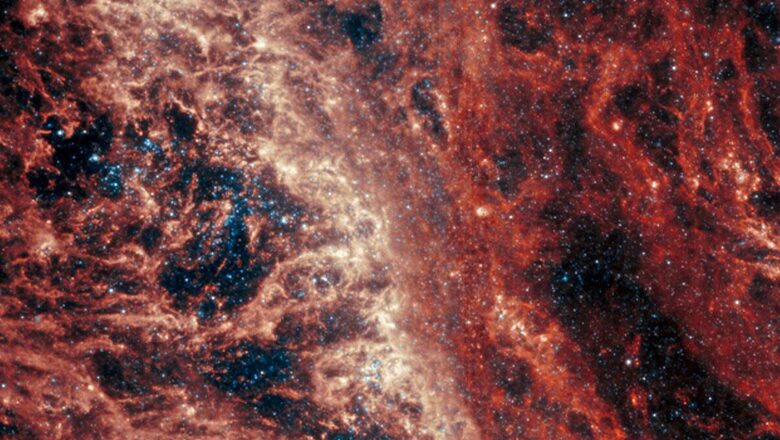
views
A team of astronomers have used data from the powerful James Webb Space Telescope to solve one of the ‘most puzzling mysteries’ in astronomy. For the longest time, scientists have wondered why they have seen light around the galaxies from hydrogen atoms. This light is called the ‘Lyman-α emission’. So far, scientists have not come up with any plausible explanation for this light’s source. Callum Witten, a researcher at the University of Cambridge, elaborated this question in the European Space Agency blog and said, “One of the most puzzling issues that previous observations presented was the detection of light from hydrogen atoms in the very early Universe, which should have been entirely blocked by the pristine neutral gas that was formed after the Big Bang.”
Now, a team of astronomers might have discovered the source of this light. The researchers studied highly detailed photos and data captured by the James Webb Space Telescope’s NIRCam instrument and observed, “smaller, fainter galaxies that surround the bright galaxies from which the ‘inexplicable’ hydrogen emission had been detected”.
Simply put, the new data allowed them to see smaller galaxies that were actively “interacting and merging with one another”. With this observation, the astronomers concluded that these previously unseen galaxy mergers could be the source of the hydrogen light emissions.
Sergio Martin-Alvarez, a team member from Stanford University who participated this this study said in a statement, “Where Hubble Space Telescope was seeing only a large galaxy, Webb sees a cluster of smaller interacting galaxies, and this revelation has had a huge impact on our understanding of the unexpected hydrogen emission from some of the first galaxies.”
As per a blog on the European Space Agency’s website, the team found that the “rapid build-up of stellar mass through galaxy mergers both drove strong hydrogen emission and facilitated the escape of that radiation via channels cleared of the abundant neutral gas.” It added, “The high merger rate of the previously unobserved smaller galaxies presented a compelling solution to the long-standing puzzle of the ‘inexplicable’ early hydrogen emission”.
The team’s findings were published in Nature, a British weekly scientific journal, on January 18. It is titled, “Deciphering Lyman-α emission deep into the epoch of reionization.” This study and findings are believed to be instrumental in studying the evolution of galaxies.
















Comments
0 comment